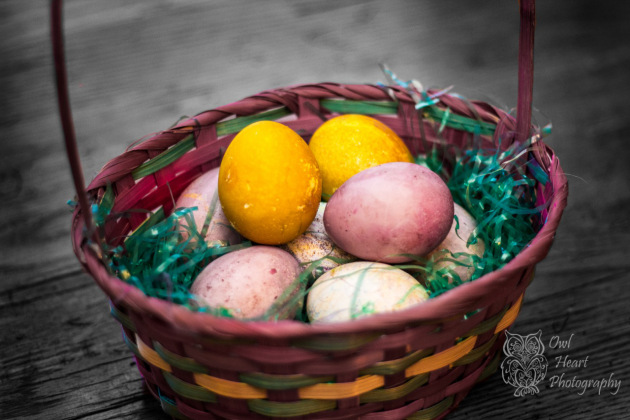
Natural Egg Dyeing for Easter/Ostara/Spring Equinox!

Whether you celebrate Easter, Ostara, Spring Equinox, all or none of the above, dyeing eggs is a fun, crafty tradition that children love to be involved in. However, using toxic food coloring is something most natural living families probably want to avoid. Thankfully there are many options for eco-friendly egg dyeing!

Some all natural options for dyeing eggs include: red, purple, or yellow onion skins, red cabbage, blueberries, yellow apples peels, paprika, carrots, and grape juice. We decided to use what we had on hand, which was beets, kale, and turmeric.
If you’re using a dark-colored juice like grape or blueberry, simply add a splash of white or apple cider vinegar, perhaps some water if you need a larger quantity of dye, and soak the eggs in it.
Other options like the onion skins, cabbage, apple peels, or carrots need to be boiled for 20 minutes with 1-2 cups of water to concentrate the color, then add vinegar after mixture is removed from heat.
We purchased white organic eggs instead of our usual brown or multi-colored, so the colors would show up better. We considered buying cheap non-organic white eggs to leave out as decorations, but wasting food doesn’t sit well with me or my friends who participated, so we decided to hard-boil the eggs, dye them, leave them out for a bit, refrigerate them to eat later, and put them out again any time the kids asked.
The kids colored on their eggs with crayons while the adults chopped, juiced, and prepped the dye. Stickers or rubber bands could also be used to create a fun design.
Since I own a juicer, we decided to use it for making the dye, which was easy and made beautiful dye. A juicer removes the pulp from the produce, leaving only the pure juice behind. This is especially effective with the beets, because beet juice is a super vibrant, lovely pink color that is excellent for dyeing eggs, paper, clothes, etc.
The kale also produces a beautiful green juice, although it did not make as potent a dye and left more of a light green tint on the eggs. We added enough water for the juice to cover the eggs, and a splash of vinegar to help set the colors. Red onion skins are supposed to make a nice jade green color, so I will try those next time.
Another option if you don’t have a juicer is using a blender. Chop the beets, or whichever colorful produce you’re using, and put them in a blender with a cup of water and a splash of vinegar. Blend on high until thoroughly blended, then strain the mixture to remove the pulp from the liquid dye.
Turmeric is a beautiful bright yellow powdered spice, also available in fresh root form. If you can find fresh turmeric root, you could also juice that. The powder worked beautifully though. Add 1 tbs of powdered turmeric to 4 cups water, then boil for 20 minutes; add a splash of vinegar once removed from heat. This makes a lovely concentrated yellow dye.
The eggs were left to soak for about an hour, but 30 minutes should be good. Gently rinse the eggs to remove excess dye and film, and ta da! Beautiful, naturally dyed, eco-friendly holiday eggs. Enjoy!
All photos by Owl Heart, a fantastic, ethical, organic, work-at-home parent company!








Comments are closed.